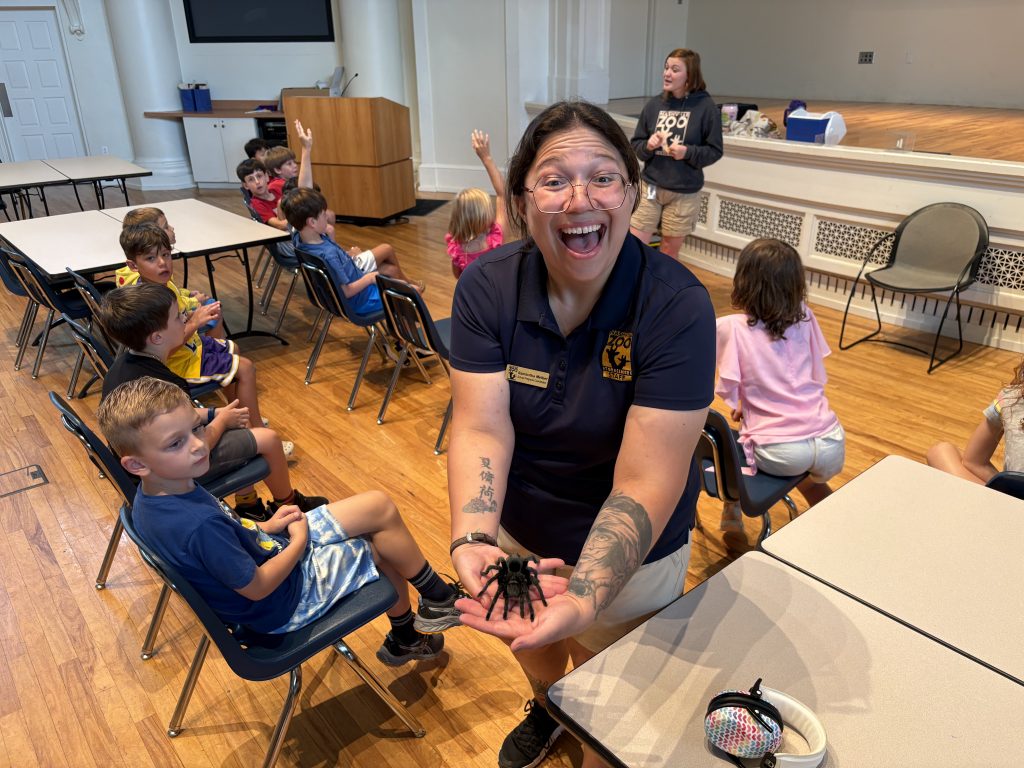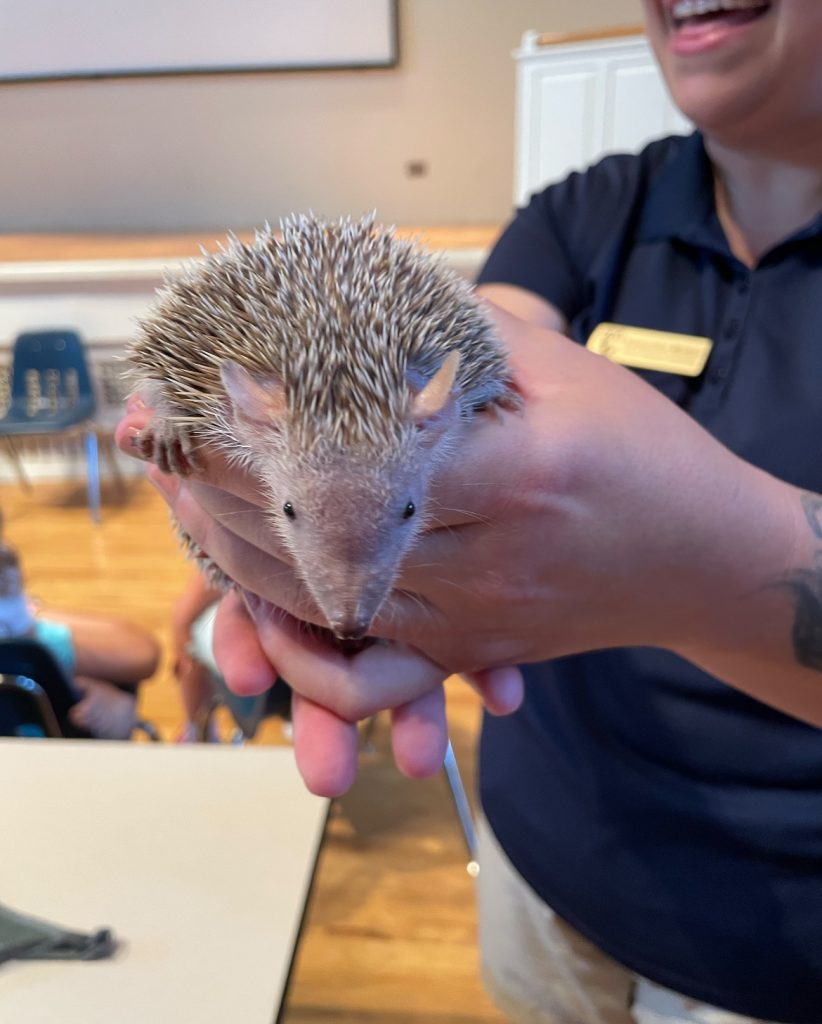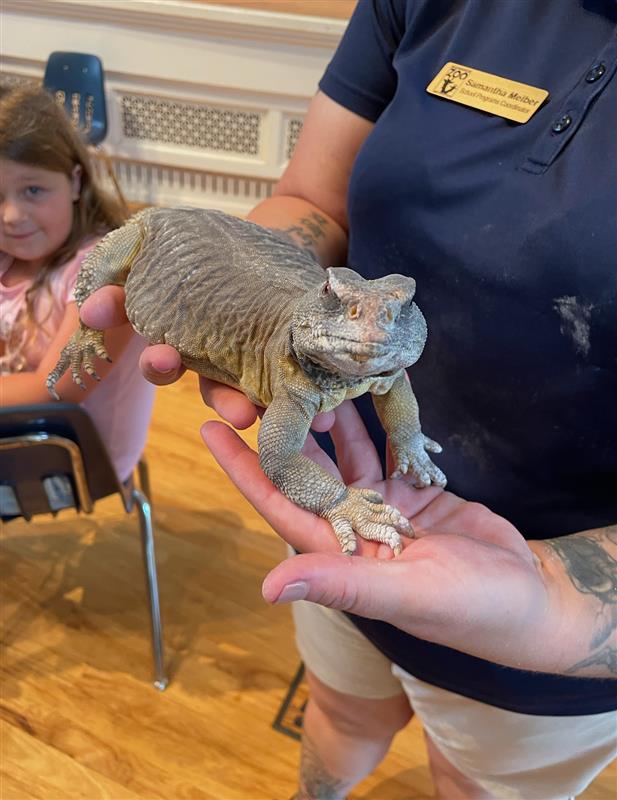Summer SAVY, Session 4 Day 4, “Creature Connections: Animals, Humans, and the Natural World” (1st-2nd)
Dear SAVY Families,
I hope that this blog post finds you well! It is hard to believe we are wrapping up our week together at SAVY Summer 2025 Session 4: Creature Connections. However, our learning is nowhere near done!
We started the day learning about interactions and teamwork with an emphasis on how and why animals live and work in groups. First, we looked at some common phrases such as “Birds of a feather flock together” and “The whole is greater than the sum of its parts”. The SAVY zoologists had heard many of our famous sayings, but few had applied them to the animal kingdom. Next, the zoologists got to play a game of “amoeba tag.” This game is a form of tag that serves as a model for how animals work together. While the SAVY zoologists had a lot of fun with this, it was exciting to see them make connections to our generalizations of interactions. After this, the zoologists got a partner and an animal. They used an animal behavior card to learn more about the animal, and then they created a job application poster for their animal to hire another animal to join their team. On the application poster, the zoologists had to list the “skills an animal needed” to join the team. For example, the bumblebee group listed “team members must be able to pollinate up to 4,000 flowers,” and the chimpanzee team listed “applicants must be able to open a seed with a rock”. The zoologists were excited to share what they learned about their animals with the class! Finally, we defined the word symbiosis, a relationship between two organisms, and learned about the three types of symbiosis: parasitism, commensalism, and mutualism. We watched videos with examples of symbiosis, and the zoologists were especially interested in the humpback whale’s bubble net fishing.
This afternoon, we also took a deep dive into developing vocabulary by understanding the structure and function of word parts. While all week, our SAVY students in Creature Connections have been referred to as zoologists, we had not yet officially defined what a zoologist is. We used word parts to define both biologist and zoologist to examine the differences between these two professions, and we learned that one thing zoologists do is sort animals.
Using models of fish bones, the zoologists then created their own definition of structure and function and how the two are similar and different. Next, we looked at a presentation of animals with peculiar structures. The SAVY zoologists had to hypothesize as to what the function of these strange structures might be. Many zoologists will be eager to continue this work at home!
We ended the day with a visit from the Nashville Zoo! The team from the zoo brought three animals with strange structures to deepen our learning on the day. The SAVY zoologists got to ask questions about what is considered when creating each animal’s habitat and how the zoo supports each of their animals. It was certainly a highlight of our week so far! The animal ambassadors we met were Shelob the Brazilian Tarantula, Posie the Tenrec, and Cleopatra the Egyptian Uromastyx.
Questions to ask your zoologist:
- Why do animals live and work in groups? How does your animal work in a group?
- How did the game of amoeba tag teach you about interactions and living in groups?
- What is the difference between a zoologist and a biologist? What is the same about the two?
- What strange creatures were you most interested in?
- What animals did you get to see from the zoo?
I hope the SAVY zoologists get great rest tonight to prepare for our last day of SAVY Summer 2025 Session 4: Creature Connections!
Sincerely,
Ms. Gruchot




